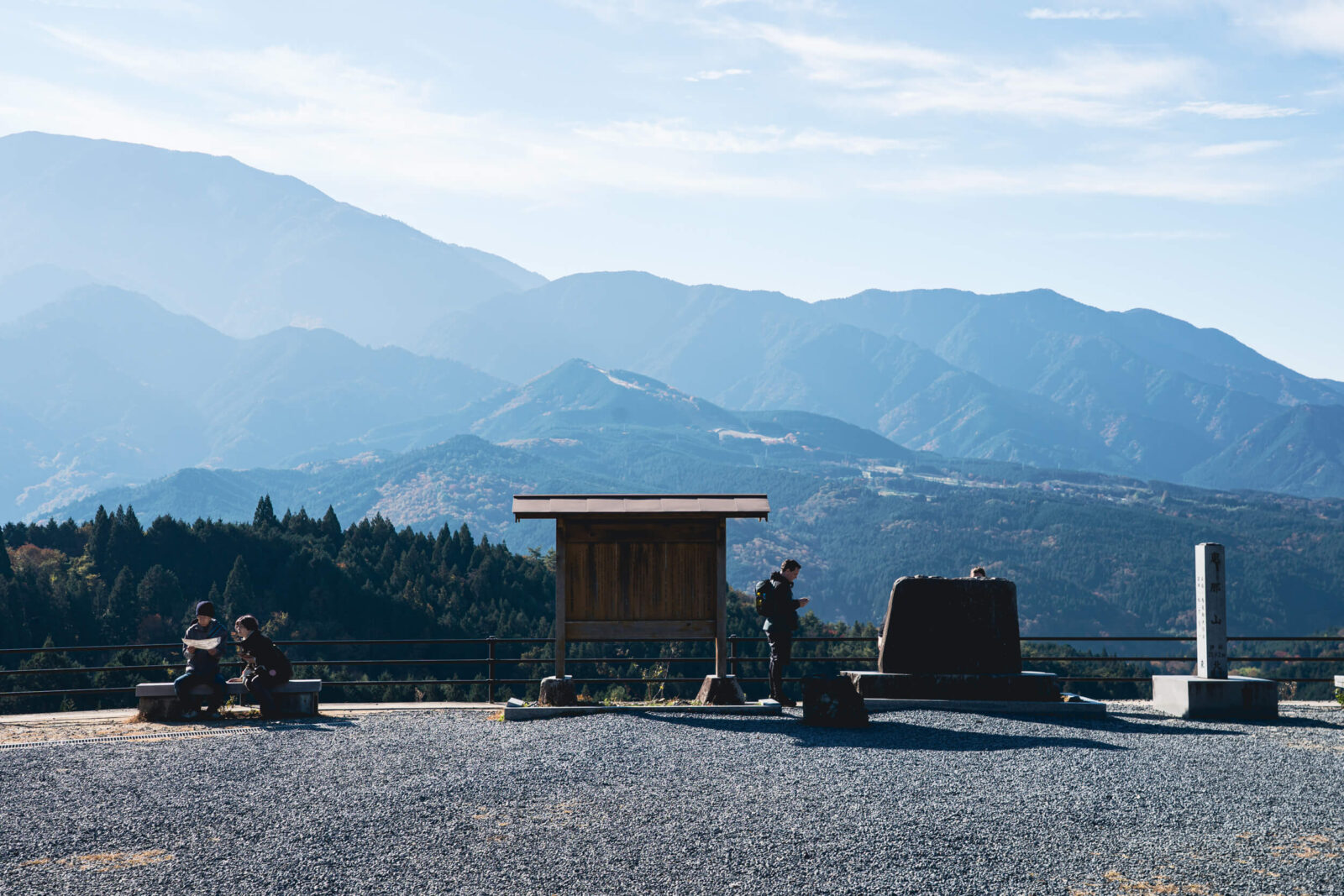What Is the Nakasendō Trail?
The Nakasendō (中山道) is one of Japan’s historic Edo-period highways that once connected Kyoto and Edo (Tokyo) through the mountains of central Japan. Unlike the coastal Tōkaidō route, the Nakasendō was an inland road—safer from typhoons and floods—and famous for its beautiful post towns, mountain passes, and samurai-era atmosphere.
During the Edo period, travelers, merchants, and daimyo lords walked this long route, resting in 69 official post towns. Today, many portions still remain preserved, especially Magome-juku and Tsumago-juku, two of the best-preserved Edo-period towns in Japan.
Walking the trail today feels like stepping back into old Japan—quiet wooden houses, stone paths, water wheels, old inns, and breathtaking nature. It is peaceful, nostalgic, and incredibly photogenic.
Why Visit the Nakasendō Trail (Magome → Tsumago)?
✔ 1. One of Japan’s most beautiful historic walks
The 7–8 km trail between Magome and Tsumago is the most famous section. It offers a perfect balance of forest streams, mountain views, rural scenery, and traditional architecture.
✔ 2. Two fully preserved Edo-period towns
Both Magome and Tsumago look almost frozen in time—no power poles, no modern signs, no tall buildings. Just charming wooden houses, tea shops, and retro streets.
✔ 3. Accessible for beginners
It’s a manageable half-day hike. Well-marked, safe, and suitable for casual walkers.
✔ 4. Seasonal beauty
- Autumn: Bright red and gold maple leaves
- Spring: Cherry blossoms and wildflowers
- Winter: Quiet snow villages
- Summer: Lush forests and cool streams
✔ 5. Peace, nostalgia, and slow travel
You can walk, take photos, try local sweets, talk to shop owners, and enjoy Japan away from big crowds.
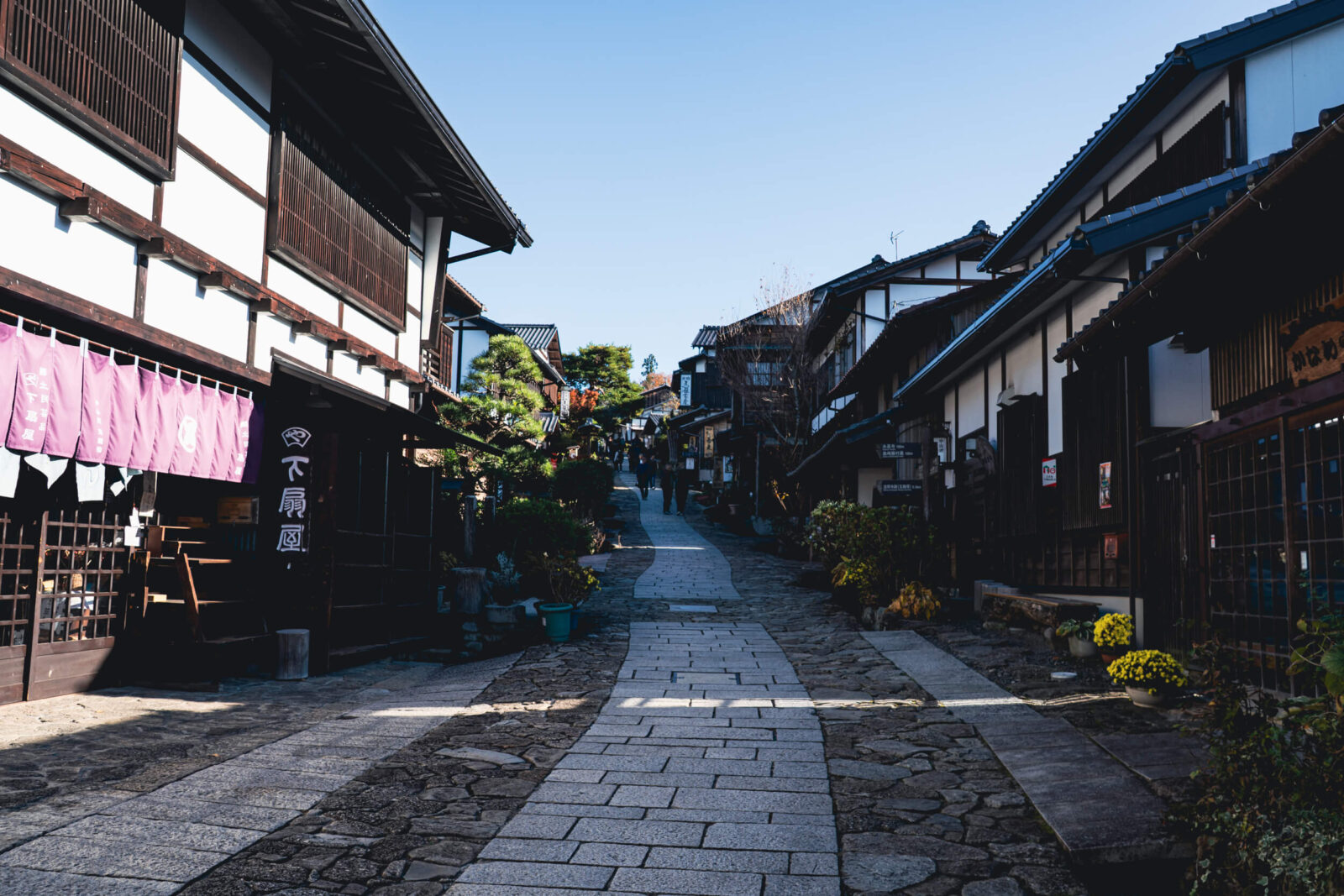
How to Get to Magome from Nagano (Without a Car)
Reaching Magome is very possible by train + bus. Here’s the clearest route:
Option 1: Nagano → Nakatsugawa → Magome (Most Common)
1. Nagano Station → Nakatsugawa Station
Take the JR Shinano Limited Express (bound for Nagoya).
- Duration: ~1 hour 15 minutes
- Cost: ~5810yen
2. Bus: Nakatsugawa → Magome
From Nakatsugawa Station, take the bus at Platform 3 to Magome.
- Duration: 31 minutes
- Cost: 800 yen
- Easy schedule: Buses run several times daily
It’s best to check the latest bus schedule with the staff or posted signage, as times may change.
Option 2: Nagano → Matsumoto → Magome (If exploring Matsumoto)
- Nagano → Matsumoto
- JR Shinonoi Line
- ~50 minutes
- Matsumoto → Shiojiri → Nakatsugawa
- JR Shinano Limited Express
- ~1 hour
- Nakatsugawa → Magome
- Bus as above
This is perfect if you want to make Matsumoto Castle part of your trip.
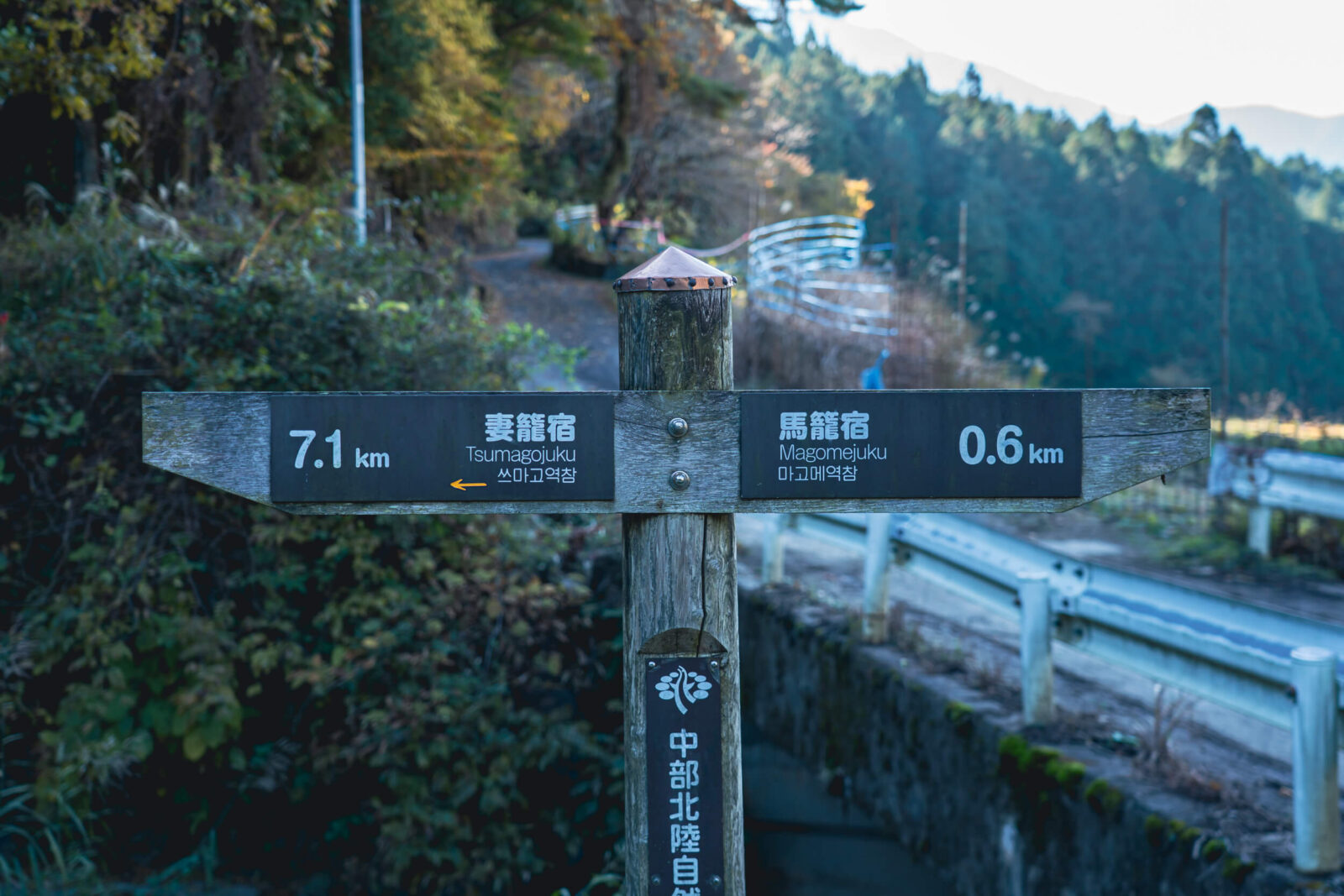
Starting Point: Magome-juku
We arrived at Magome-juku by car and parked near the main entrance. Since we planned to walk to Tsumago and return by bus, leaving the car at Magome worked well.
When we arrived, the shops hadn’t all opened yet — giving the town a quiet, peaceful atmosphere before the day’s foot traffic picked up.
The Nakasendō Trail: Magome → Tsumago
- Distance: approx. 7.6 km
- Time we took: about 2½ hours including pauses for photos and videos
- Terrain: Mostly downhill from Magome, but with uneven surfaces, stone paths, roots and occasional slippery sections
- Rest areas: Roughly every 1-2 km, there are places to pause, take in the scenery, rest benches or viewpoints
- Highlight: The autumn foliage was amazing—rich tones of red, orange, and gold lining the trail and adding depth to the forest path.
- Direction: Most travelers start in Magome and walk to Tsumago because Magome starts uphill, and the rest is mostly downhill.
- Bear bells are provided along the trail
- You’ll see bells along the forest sections—ring them as a tradition and a safety measure.
- Toilets in Magome and Tsumago
- Vending machines only in towns but I saw a house that sell water bottles for 100yen. So please bring cash as it was unattended and you have to leave the payment.
- Small tea houses (seasonal)
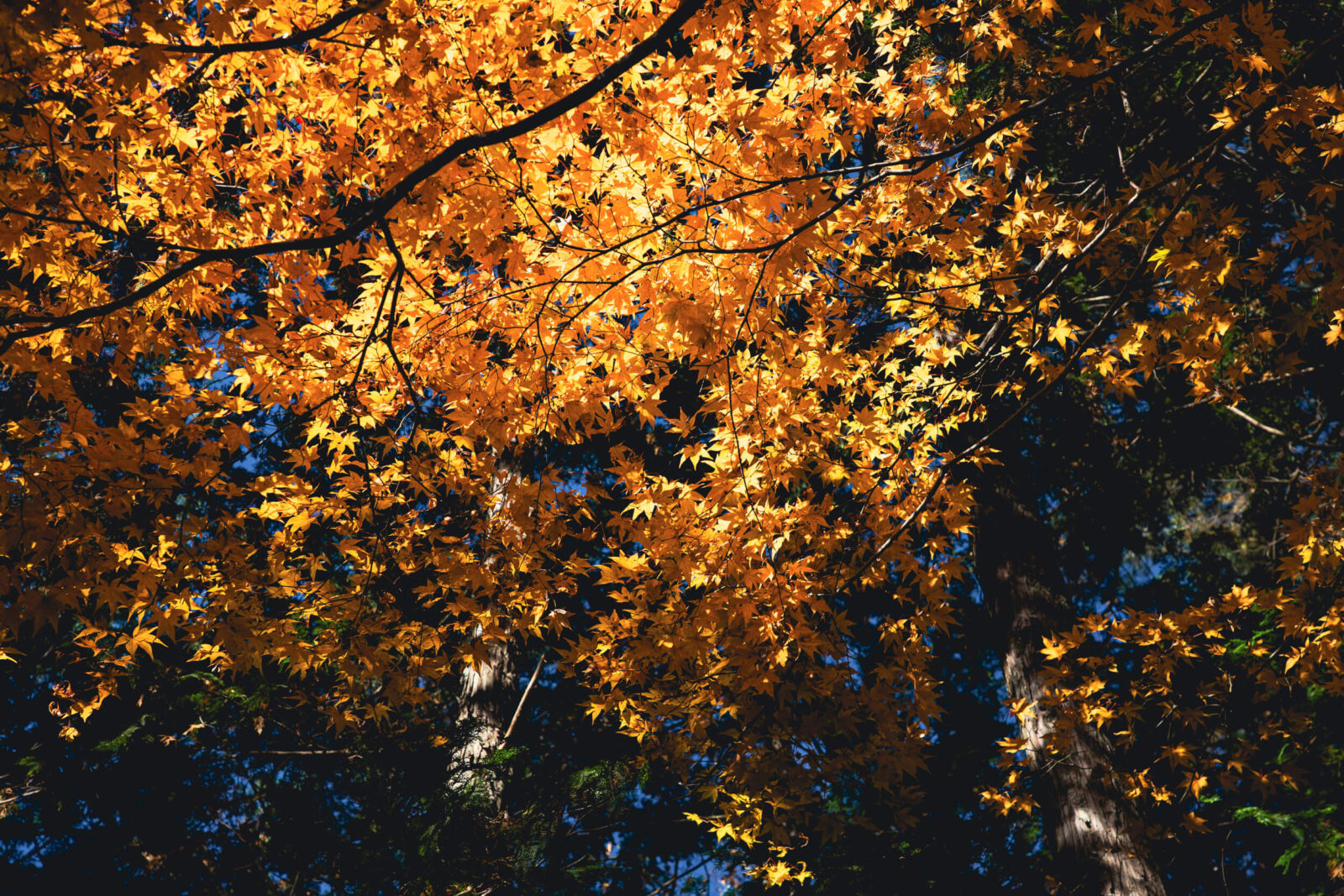
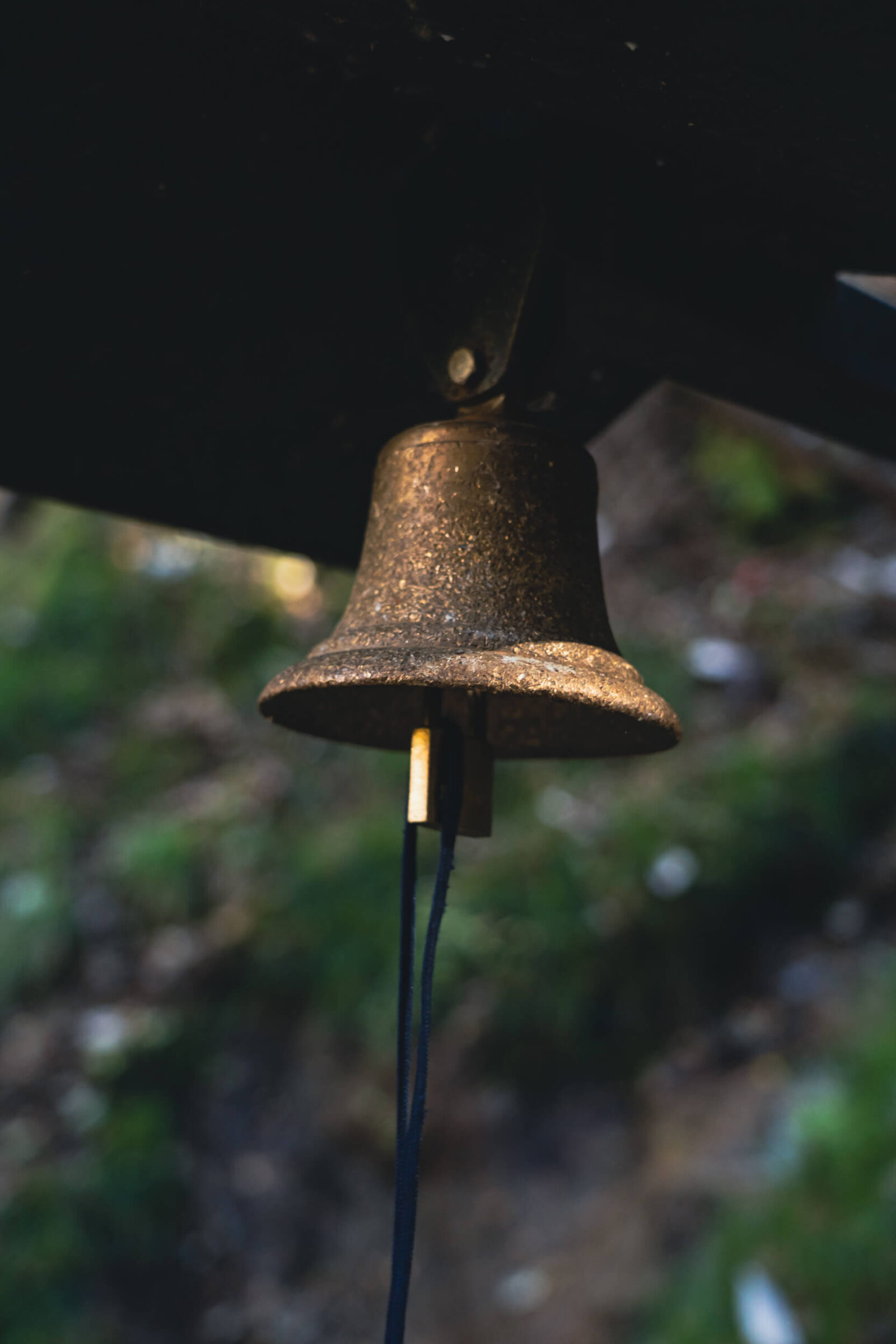
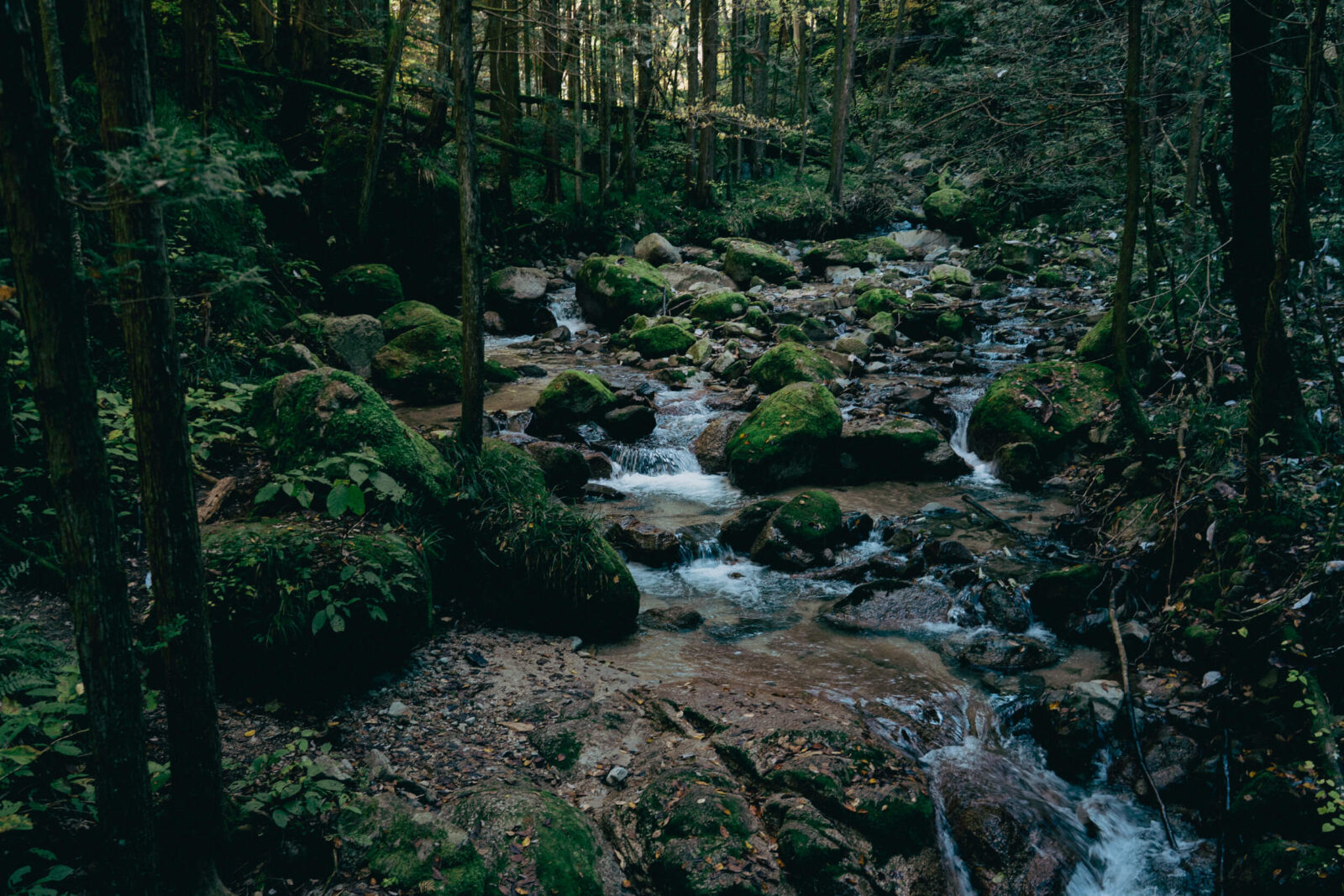
Why footwear matters
We originally considered walking with athletic shoes and thought they might suffice. Thankfully, we had packed long hiking shoes, switched right before we began, and felt it was the right decision. The trail has uneven stones, some steep portions, and places made slippery by fallen leaves or moisture. While athletic shoes might be okay, the hiking shoes gave us extra stability and comfort. If you’re doing this hike, I strongly recommend wearing proper hiking shoes rather than relying solely on trainers or sneakers.
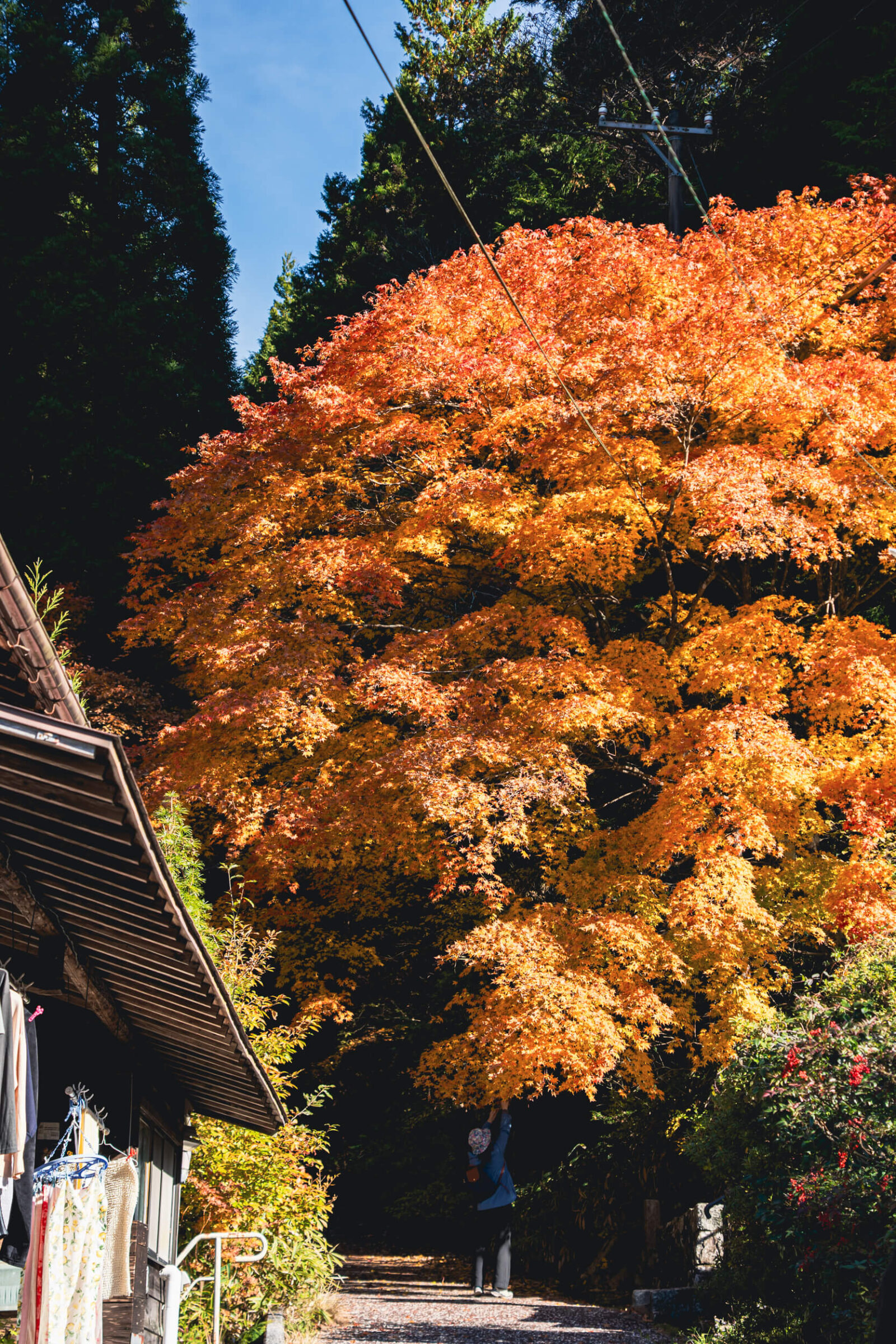
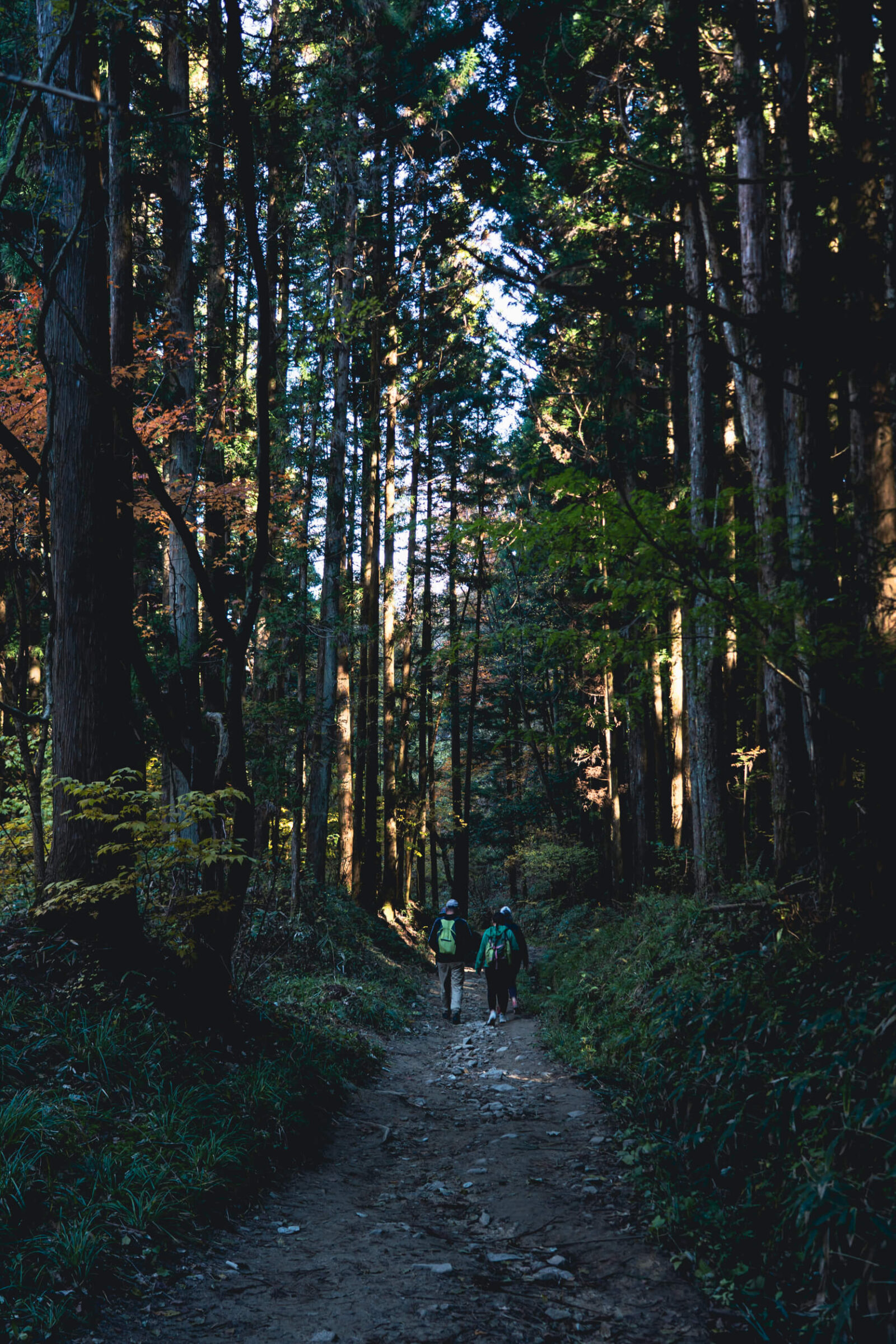

Snack Stop: Oyaki at Tsumago-juku
When we reached Tsumago-juku, we enjoyed a light snack before lunch: oyaki.
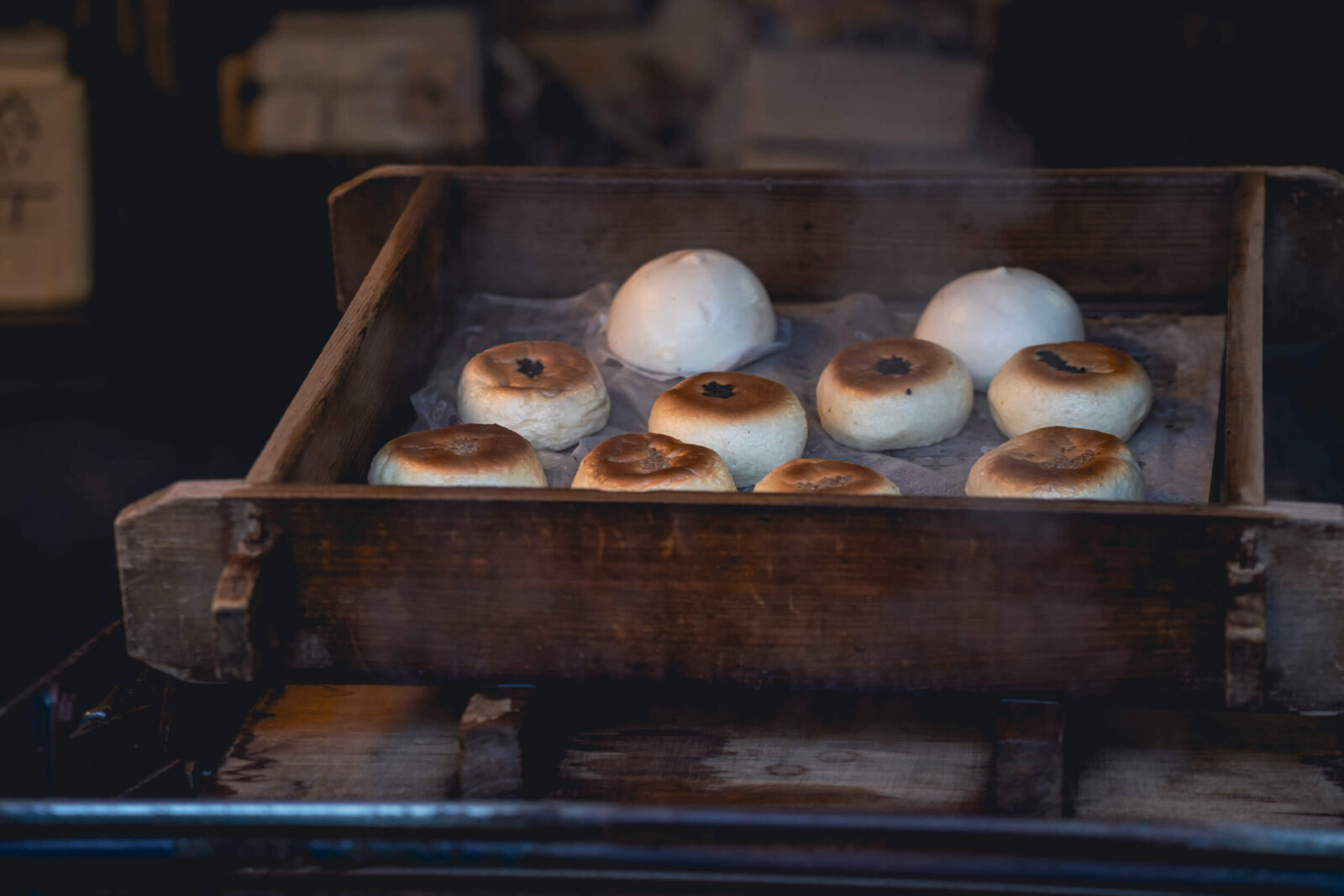
- I ordered the nozawana-filling version (slightly salty, leafy, refreshing)
- My husband chose the miso-eggplant filling (rich flavour)
We shared half and half—it was fun to trade and taste each other’s.
This light snack was perfect—enough to tide us over while we walked around and waited for lunch.
Lunch at Omote Soba in Tsumago-juku
For lunch we stopped at Omote Soba, a cozy soba restaurant in the heart of Tsumago-juku.
We ordered the soba set with maitake tempura on the side. The maitake mushrooms had a lovely texture and paired beautifully with the crisp tempura batter. The cold soba noodles were crisp and clean in flavour—just the right meal after a good walk.
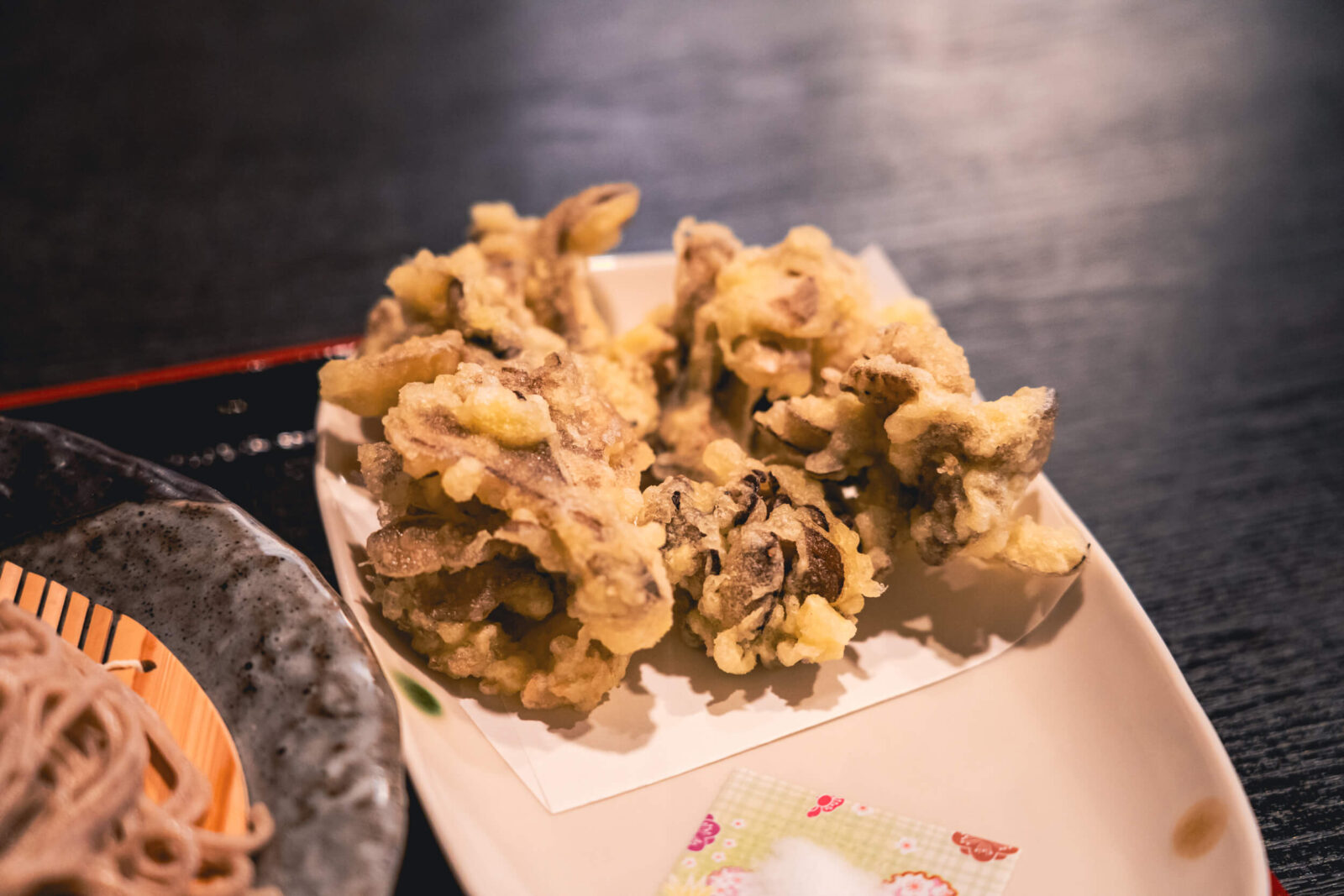
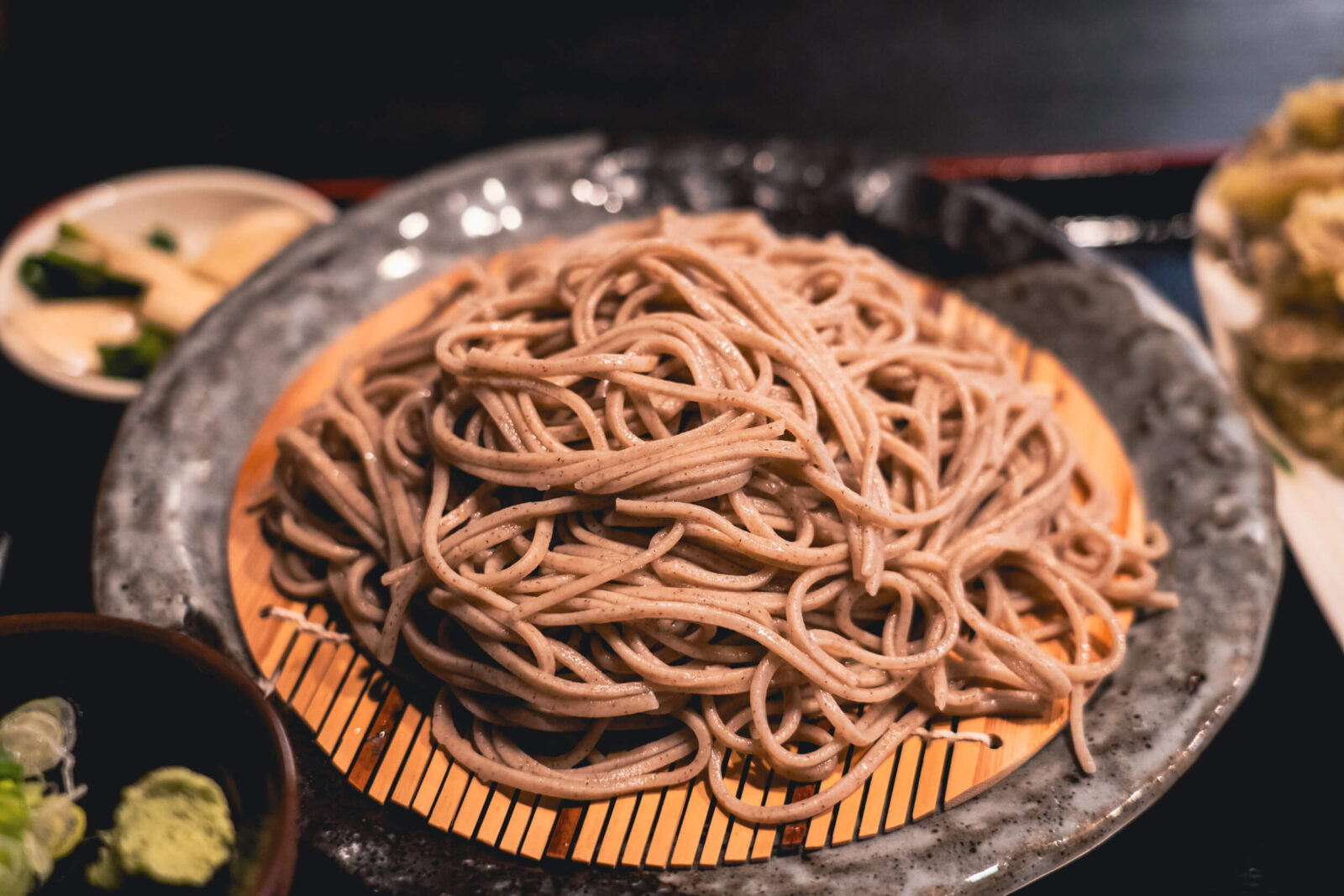
Taking the Bus Back to Magome
- Bus fare: 600 yen (cash only)
- Payment timing: You pay when you get off the bus
- Schedule tip: Our bus was scheduled for 12:47 pm, but it left about 3 minutes early
- Queueing note: At the parking lot No. 1 area, there were two bus-stop posts and two separate lines forming. Because we speak Japanese, we asked a staff member which side to wait on, and he directed us to the correct one. As the bus time neared, people from the other line also shifted over. So: make sure to ask, and arrive a little early.
Also: Bring cash as mentioned—cards are not accepted for the bus.
Back in Magome-juku: Afternoon Café Break

When we returned to Magome in the early afternoon, most of the shops were open, which made it a good time to explore.
We stopped at Yomogiya for a relaxed café break:

- I enjoyed warabimochi with vanilla cream plus an iced matcha—light, sweet, and cool.
- My husband had coffee and a chestnut yōkan, a seasonal sweet that complemented the drink beautifully.
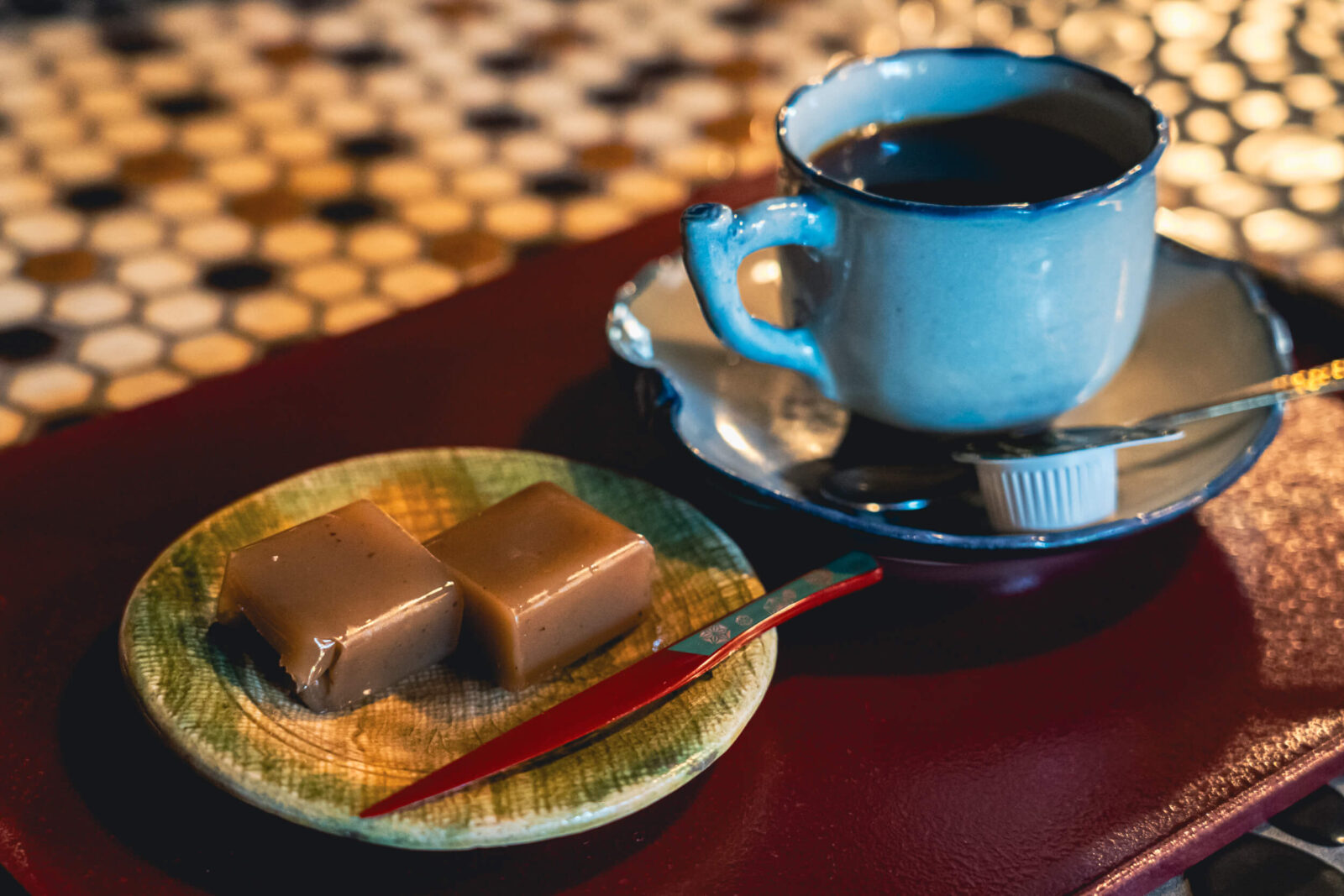
While relaxing, we also picked up some local wine and craft beer in a souvenir alcohol shop.
It was the perfect way to round out our walk with comfort and indulgence.
Our day from Magome-juku to Tsumago-juku felt like stepping into history while being embraced by nature and local culture. The trail is beginner-friendly, full of texture, colour, and charm—it’s gentle, yet rewarding. From the crisp autumn leaves to the warm soba lunch, to the relaxed café break in the afternoon—it all came together beautifully.
One thing we truly enjoyed was allowing room for flexibility. As we walked, my husband and I would step into any souvenir shop that caught our attention. If we felt like stopping at a café, we simply checked Google Maps or looked at the storefront and decided based on our mood. No strict schedule—just choosing what felt right in the moment.
This kind of slow travel makes the experience more personal, and it’s the best way to find places that suit your own preferences and pace.
If you’re planning a trip, this could be one of the most tranquil and enriching days you spend in Japan. Enjoy every step, every bite, and every moment of discovery.
